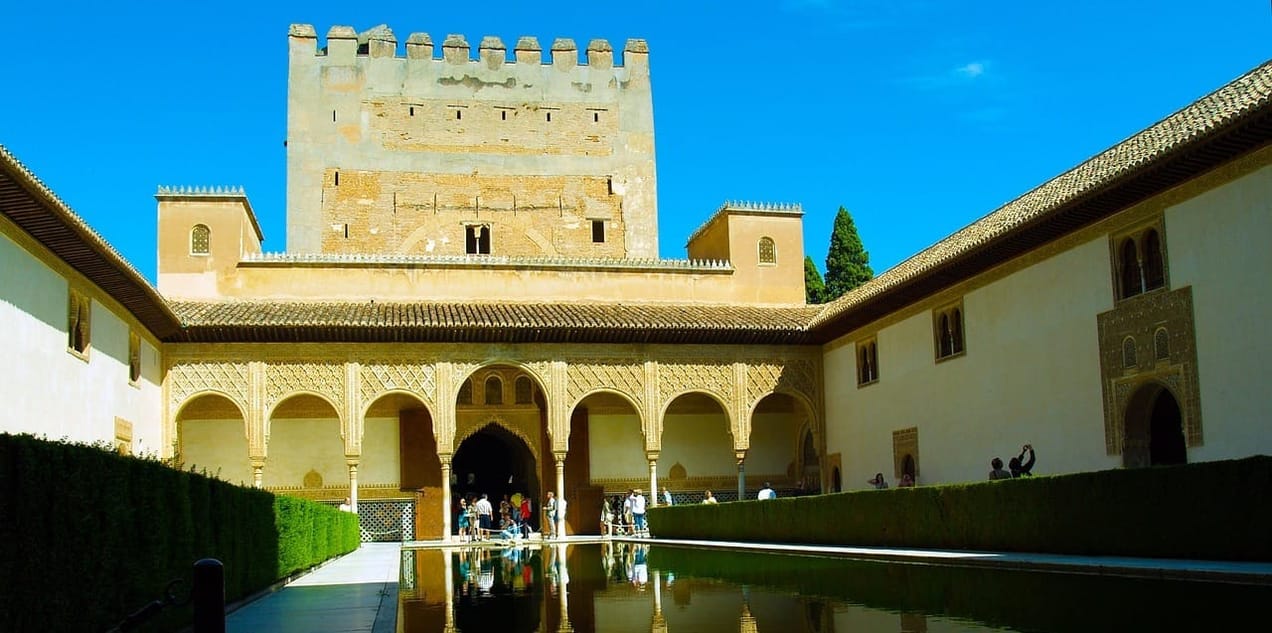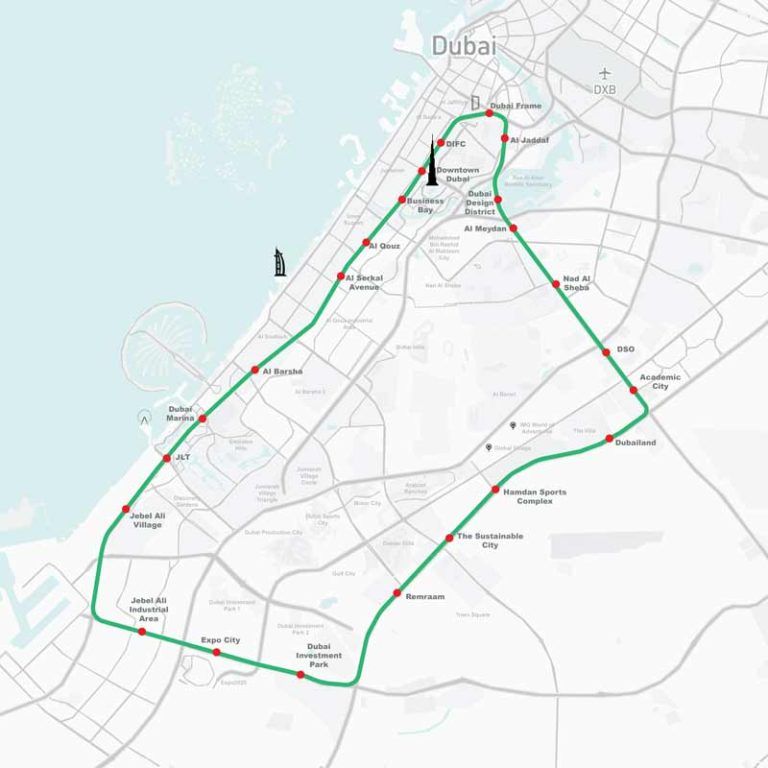
'The Loop' supporting the 20-minute city
Creating the right infrastructure to reduce the distance that people need to travel can be important in decarbonising transportation.
Summary: Dubai plans to create a 93 km sustainable urban highway, powered by kinetic flooring that promotes walking and cycling as primary modes of transport. 'The Loop' designed by developer URB, would be powered by 100% renewable energy and would feature several wellness hotels along its route, as well as fitness stations and sports facilities. Vertical farms would be located inside the structure to grow local produce. Residents will be rewarded for cycling or walking daily and their metrics will be monitored via an app.
Why this is important: Much of the focus on decarbonisation efforts in transportation has been on reducing fossil fuel reliance of the motor. However, reducing the requirement for motorised transportation in the first place would reduce emissions too and clearly one way to do that would be to reduce the distances required to travel.
The big theme: We are used to the traditional investment and corporate world being divided along industry or sector lines - silos really. Sustainability illustrates how interconnected themes and ultimately industries are. A holistic approach is necessary to enable an effective transition. Smart Cities are a good example of interconnected thinking. This is escalated when we consider what is needed to create truly self-sufficient and sustainable living communities. Multiple disciplines from material science, engineering, IoT, natural capital and agriculture as well as health & well-being will need to be brought to bear. Ultimately improving efficiency for all leads to lower consumption (through lower wastage) which in turn drives lower harmful emissions and improves social inclusion.

The details
Summary of a story from The National News
Leading sustainable cities developer URB has revealed designs for a climate-controlled 93km urban highway in Dubai designed to promote human-powered commuting - cycling and walking - as the primary mode of transport. 'The Loop' would run on 100 percent renewable energy powered by kinetic flooring and be enclosed in a curved glass structure. It is designed to be mixed-use with both residential and leisure facilities including those for well-being tourists. This would include wellness hotels, greenery, pocket parks and allotments as well as vertical farms growing produce that would be used in the city.
The Loop fits into Dubai's announced plans to become a '20-minute city' with the aim of allowing residents to access all of their daily needs with no more than a 20-minute foot or bike journey. The Dubai plan aims to put 55 percent of residents within 800 metres of mass transit stations, allowing them to reach 80 percent of their daily needs and destinations.
Why this is important
Transport made up 37% of CO2 emissions globally in 2021. Approximately 95% of the energy for powering transport comes from fossil fuels. Road transportation is the biggest segment with cars and vans accounting for eight percent of global direct CO2 emissions according to the IEA. To be on track for the net zero emissions pathway the IEA suggests that emissions need to fall on average by roughly three percent per annum through to 2030. Much of the focus on decarbonisation efforts is on reducing that fossil fuel reliance. For example, the Inflation Reduction Act 2022 contains a number of measures that aim to accelerate the move to low-carbon fuels and engines, including extending tax credits for biodiesel, renewable diesel and alternative fuels (section 13201) as well as low carbon transportation material grants (section 60506) and for EV purchases (section 13401). In Europe, distances commuted vary between nations from 5.6 km per person per day in Greece to 19 km per person per day in Germany. In China the average distance travelled for commuting one-way ranges from 7.6 km to 9.4 km for cities with a population above 10 million people.
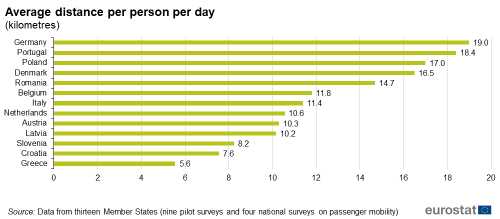
However, reducing the requirement for motorised transportation in the first place would reduce emissions too and clearly one way to do that would be to reduce the distances required to travel. This is where urban planning could become a key tool for decarbonising transportation. It is estimated that over 56% of the world’s population lives in cities currently, with an estimated two-thirds living in urban areas by 2050, putting upward pressure on the contribution of the built environment to resource consumption, GHG emissions and ultimately anthropogenic global warming. Historic urban design was based on two paradigms that arguably have less relevance in today's world. The first is the car-centric model that assumes that the private car is the primary mode of transport and everything is designed around easing the use of cars, for example, incorporating large car parks/lots, minimal pavements/sidewalks and wide multi-lane roads. Another assumption historically has been the 'man-centric commuting model' which in a nutshell assumes that a person leaves their home, goes to work and comes back from work. A 1999 survey in Vienna found that women had a much more varied pattern of movement. They also used public transport more often and made more trips on foot than men. The growth in hybrid working will also impact some previously held routines. Urban planning could therefore not only reduce emissions and energy use but also improve social inclusion.
The Dubai 2040 Urban Master Plan is focused on "enhancing people's happiness and quality of life." Of course there is a strong commercial aspect to that - making Dubai competitive as a global destination. However, commerciality and sustainability do not have to be mutually exclusive. The '20-minute city' approach (which is sometimes referred to as a '15-minute city' - yes it is starting to sound a little like '6-minute abs') forms the basis of The Loop and fits within that overall urban master plan. Looking at current European commute distances, it is clear that some redesign is needed. Using Google Map's average walking speed of three miles per hour or 4.8 km per hour, even for the average person in Greece that is still a one hour and ten minute walk and a veritable hike for the average German at almost four hours! Even cycling, it would still be just over one hour and ten minutes in Germany. Other examples of cities adopting a '20-minute city' approach include Barcelona, Edinburgh, Melbourne, Paris, and a raft of cities in China including Shanghai. The approach is not without potential issues with one criticism being the risk of gentrification and displacement of long-time residents. In cases like Dubai where new neighbourhoods through expansion are being created this risk would be lower.
URB is also involved with 'The Parks' project in South Africa, a sustainable and smart city designed to produce 100 percent of its water, food and energy on site. It is also designed to promote "social sustainability and an active lifestyle" and housing that will cater for “all income levels” without segregation, aiming to “increase community cohesion” according to the project website. A similar concept project is under development in the UK in Norfolk at Ashwicken Lake. You can read about both of these in 'Perspectives: truly sustainable living?'
Gamification can be a powerful behavioural nudging tool. There a number of examples at the individual level that tap into our natural sense of competition, even if that is with ourselves. Fitness trackers are great for eking out those few extra steps to hit a target. Indeed insurance companies are even providing incentives for both the use of fitness trackers which helps reduce underwriting risk. In the case of The Loop release, there is discussion about rewarding residents for their activity. Although not mentioned in the release, a likely app that could be used is WheelCoin. It is part of the Move2Earn blockchain-based ecosystem and comprises a free app that allows the user to earn tokens ('WheelCoin') for walking, cycling or taking public transport. Those tokens could then be redeemed against for example, shared mobility offers that further improve well-being (bike sharing etc).
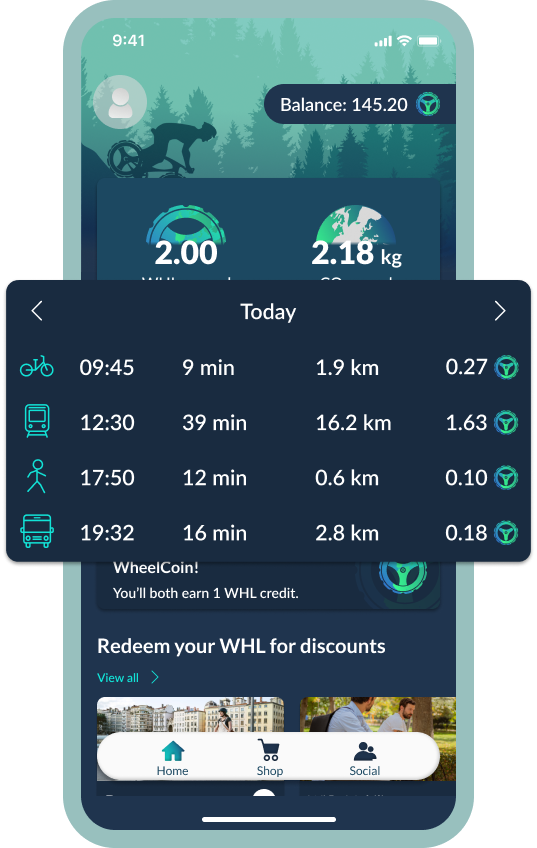
At a corporate level there are other gamification examples in the built environment. CUBE is an annual competition held across the UK designed to incentivise landlords, building managers and occupiers to reduce their energy consumption. A monthly ranking of top performers encourages healthy competition.
Something a little more bespoke?
Get in touch if there is a particular topic you would like us to write on. Just for you.
Contact us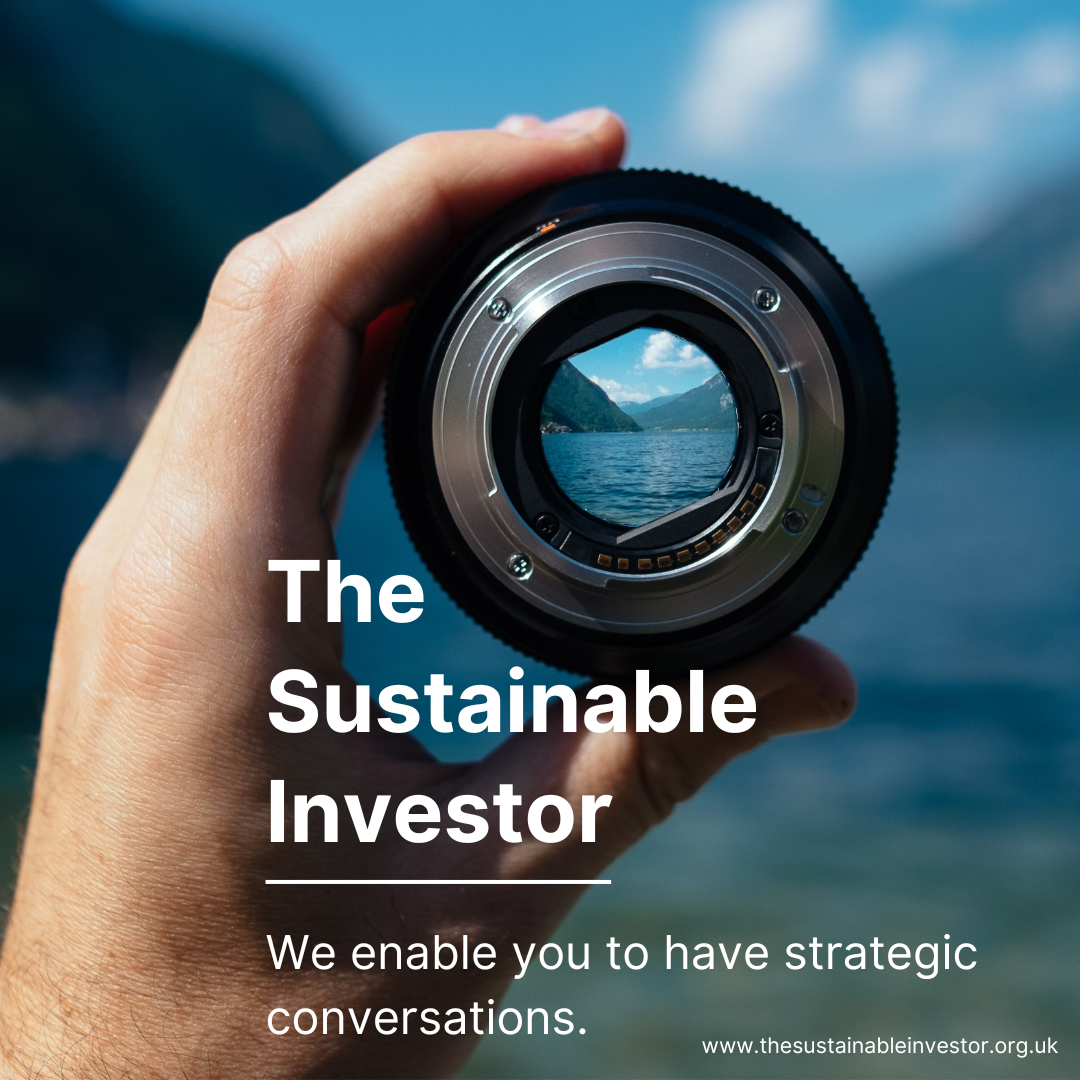
Please read: important legal stuff.

